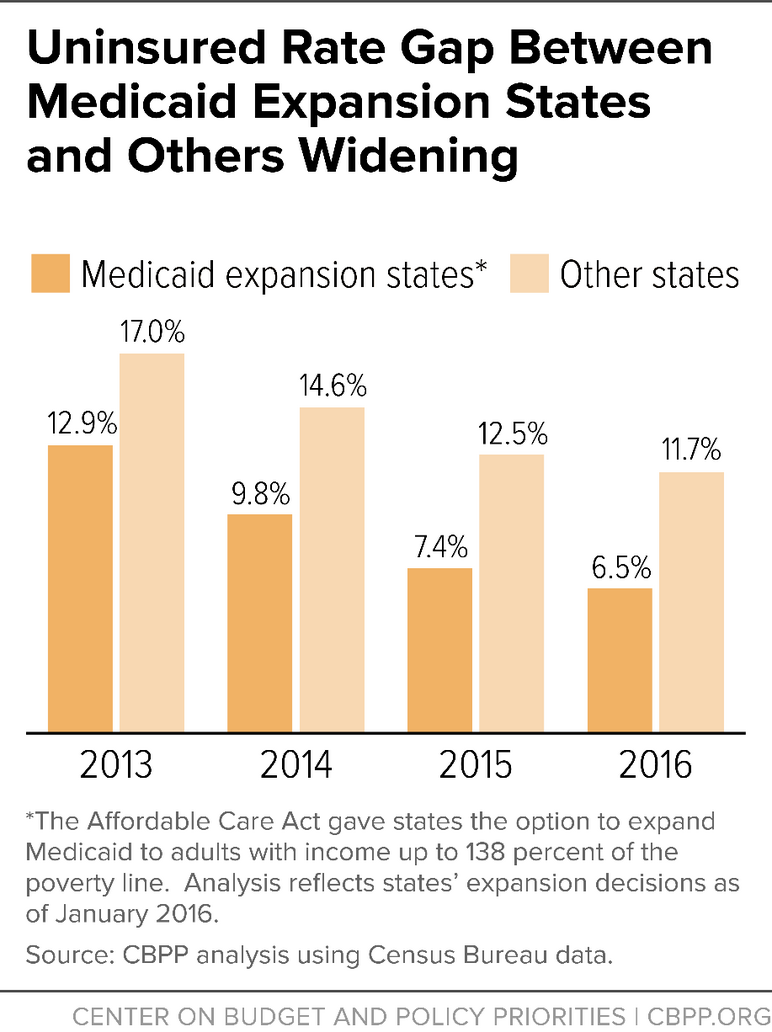BEYOND THE NUMBERS
States that have adopted the Affordable Care Act’s (ACA) Medicaid expansion had a much lower uninsured rate in 2016 than states that haven’t, and the gap continues to widen, new Census data show.
Some 6.5 percent of the people in the 31 states (including the District of Columbia) that expanded Medicaid by January 2016 lacked health insurance that year, compared with 11.7 percent in the 20 non-expansion states, according to the Census Bureau’s American Community Survey. (Since January 2016, Louisiana has expanded Medicaid.)
The gap in uninsured rates between expansion states and non-expansion states has grown in three consecutive years, from 4.1 percentage points in 2013 to 5.2 percentage points in 2016 (see chart). If the uninsured rate had fallen in non-expansion states at the same rate since 2013 as it did in expansion states, an additional 4.0 million uninsured Americans would have had coverage last year.
The ACA’s Medicaid expansion allows states to cover all non-elderly adults with incomes up to 138 percent of the federal poverty line — including, for the first time, low-income adults without children. The federal government picked up all expansion costs through 2016 and will continue to pay at least 90 percent of the cost thereafter. In addition to health coverage gains, expansion states have experienced improvements in residents’ health and financial well-being, and many also have seen budget savings as demand for state-funded health programs that serve the same population has dropped.

